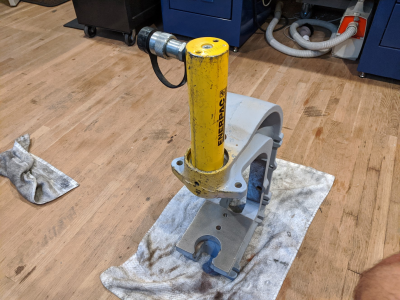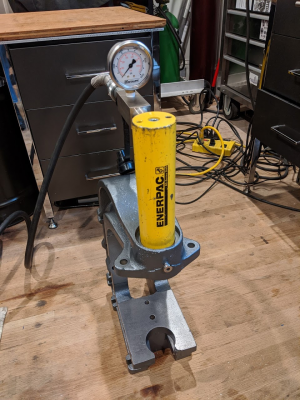- Joined
- Nov 24, 2014
- Messages
- 3,179
<snip>
I really wish I could surface grind that table! I know it is totally unnecessary but it would look great. I may have to resort to sandpaper!
Robert
If flat filing won't satisfy your cosmetics, maybe use the two holes in the platen to attach a surface ground plate.

PS: Before you repaint, please fill that ill-advised tapped hole (setscrew) as part of your refurbishment. I promise not to tell anyone.



